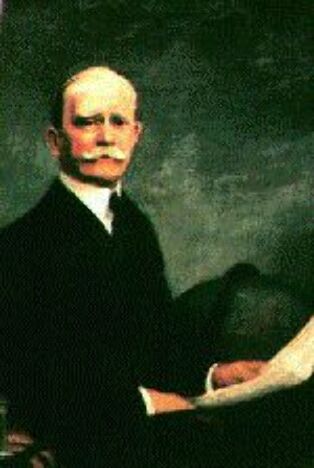- Home
- Introduction
- Website News
- Postscript Magazines
- British History
- Company History
- British History National Cash Register Co. Ltd., 1896 - 1900
- NCR Films
- NCR Vintage Products
- Divisions
- NCR Newscast Tapes.
- Personalities
- The National Cash Register Company Ltd. 1896-1900
- Circuit News - Field Engineering
- Vintage Cash Register Service Aids2
- Supplies
John Henry Patterson
1844 to 1922
John Henry Patterson
1844-1922
Industrialist * Social Reformer * Patriot * Benevolent Tyrant
Father of Modern Selling
John H. Patterson spent his youth on the family farm just south of Dayton, Ohio (population 10,000) selling his father's farm products. Sometimes the charges were unrecorded and Patterson later recalled, "I was often awakened at night by my father asking me if I had charged a certain person with the things he had taken home". Or,"I would be eating my dinner and some person would say 'Did you charge that sugar to Sonders?' I had to say, 'No, I did not'".
When John H. and his brother Frank established a successful business selling coal and miner's supplies in the 1870s unrecorded sales were again a problem. After reading a description of the cash register designed by James Ritty and sold by the National Manufacturing Company in Dayton, John ordered two, sight unseen. In six months they reduced his debt from $16,000 to $3,000 and the books showed a profit of $5,000.
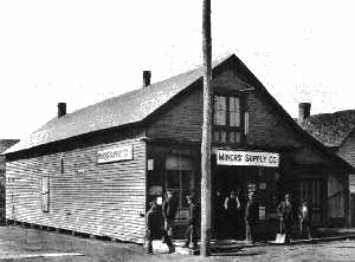
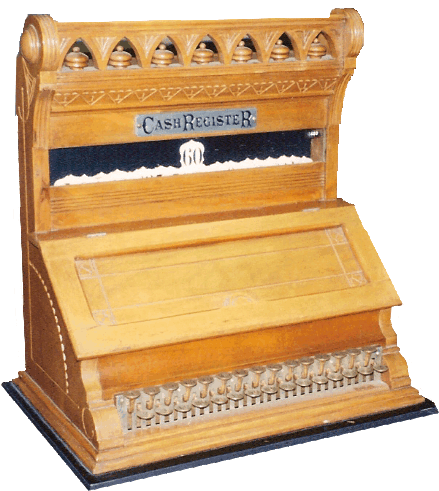
These modern machines had solved the old problems of disorganization and dishonesty. Patterson "was so impressed that he bought the company" for $6,500 and promptly changed the name to The National Cash Register Company. The Pattersons, however, had not done their homework and when they found that the company had been losing money they offered $2,000 to get out of the deal. The seller said "You purchased the stock. If you had paid for it and I had turned it over to you, I would not have it back as a gift."
Patterson trained an impressive number of executives in his business methods and philosophies. When these executives left the company or, as happened more frequently, were fired, their training went with them. In the period 1910-1930 an estimated one-sixth of the top executives in the nation's companies were former NCR executives.
The first factory buiding was constructed on the Patterson farm in 1888 and in the same year he made one of his "flying trips" by train to visit with agents in Pittsburgh, Baltimore, Washington, Philadelphia, Trenton, Wilmington, New York City, Scranton, Elmira, Buffalo, and Cleveland. At this time there were already more than 1,000 employees.
NCR sales agents were required to memorize a 450-word primer based on the successful sales presentations of Joseph H. Crane, John Patterson's brother-in-law. Patterson dropped in on agents giving them a command quiz on the 16-page primer. He fired those who refused to learn it or who failed to commit it to memory before his visit.
In 1893 the NCR Hall of Industrial Education was opened to teach agents "the best ways of helping merchants make money". This is the first known formal sales training school.
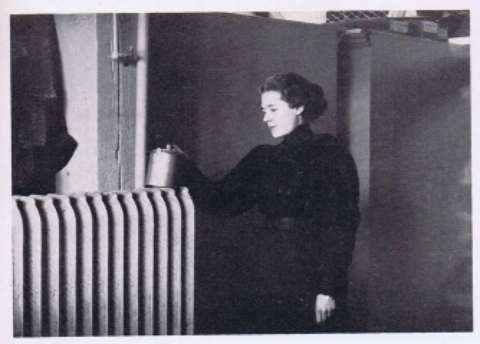
The Start of Industrial Welfare
One of the most famous photos in any history of NCR is this one depicting a young woman worker at the Dayton plant who J.H. observed heating her luncheon coffee on a factory radiator. This incident set the stage for all his social welfare programs thereafter.
A complete hot lunch was offered to all female employees but it was refused as the ladies would not accept "charity". The solution? Charge five cents.
A dining room for 400 women was built in 1895. The sick list dropped from 18 percent to 2 percent in one week.
In-plant healthcare, company sponsored vacation trips, children's programs, and even an employee country club were only a few of Patterson's employee benefits. Other industrialists accused him of coddling his workers.
Patterson believed this paternalistic treatment of his workers, especially the the Victorian era ladies, was not only the right thing to do but was also good for business.
The first "daylight factory" buildings were built in 1893 with floor to ceiling glass windows that could be opened to let in fresh air, as well as light. They also had ventilation hoods to absorb dust, first-class baths, locker rooms, and restrooms for the ladies, hospitals and first-aid stations, and gymnasiums. The grounds had spacious lawns and landscaping with colorful plantings and this was during the time when "sweatshops" were still in operation elsewhere.
In the 1890s autographic suggestion machines were used to capture employee thoughts about improvements. Signs and posters with Patterson slogans were displayed at locations worldwide.
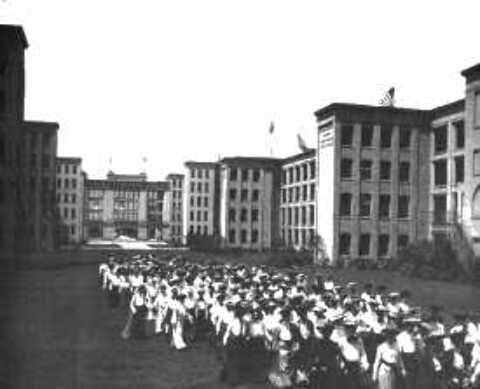
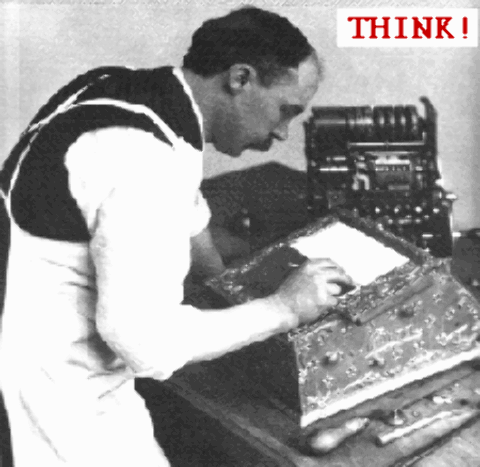
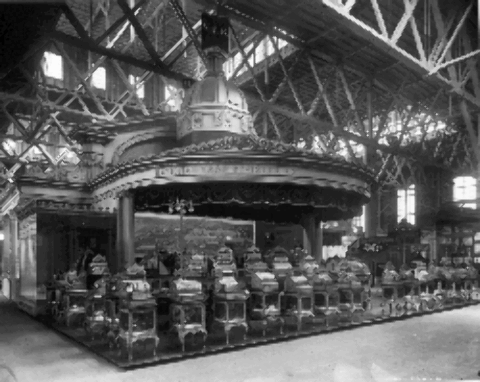
Large contingents of employees were transported, at company expense, to seashore vacations and events like the World's Fairs. Shown here is The NCR pavilion at 1904 Fair in St. Louis.
Patterson was using every conceivable means to display his products to the public. To support the sales agents' work the company produced Output, a broadside which listed sales,
discussed the benefits of the cash register and printed testimonials from satisfied users. By 1888 135,000 copies were being mailed.
It was replaced by The Hustler series with tailored versions such as Store Hustler and Saloon Hustler. These circulars contained a reply card for readers to request further information.
By 1894 a half million Hustlers and other circulars were mailed and an extra man was added to the Dayton post office just to handle the company mailings.
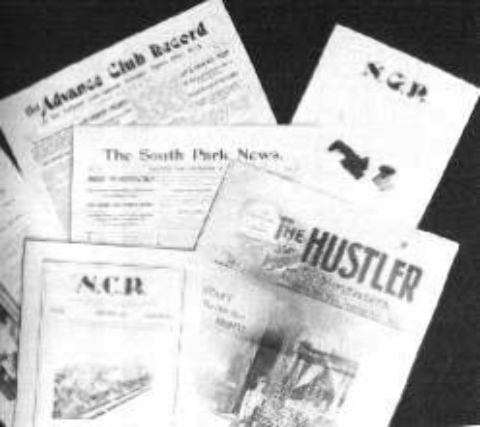
In order to get the word out to employees Patterson created another publication.The Factory News which was, in 1891, the first "house organ".The sales convention, later to be called the CPC or Century Point Club(for sales agents who met their sales quota) has been one of the company's most important annual events since 1887.
Patterson exhorted his agents to pay the rail or steamship fare and take time out from selling: "We can assure you that all who will attend, that they will be fitted to sell twice as many register as heretofore."
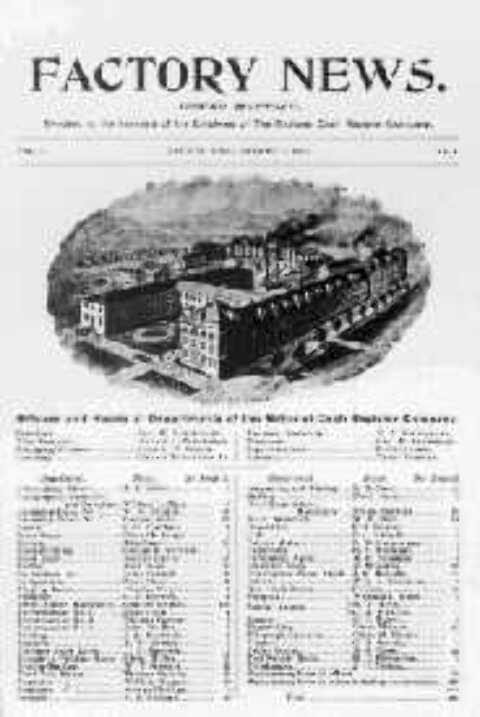
John Patterson took a dim view of any competition in the cash register business he created, whether it be new registers from other manufacturers or his own equipment sold as used.
Here he addresses an enthusiastic international group at 1898 convention in Dayton's Victorian Theatre.
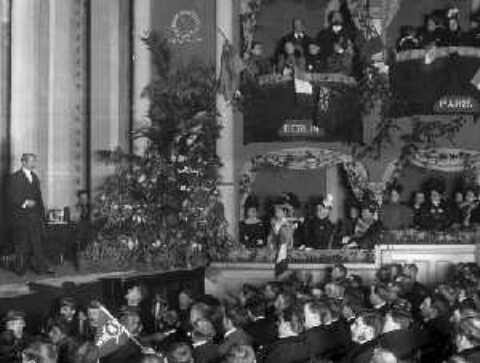
He brought Thomas J. Watson (second from right in this 1911 convention photo) to the home office to deal with the competition as he had so successfully done in Rochester. Watson was a former "drummer" who sold pianos from the back of a horse-drawn wagon in rural New York and Pennsylvania who later hired on with NCR in Buffalo. He was promoted to Rochester branch manager in 1899.
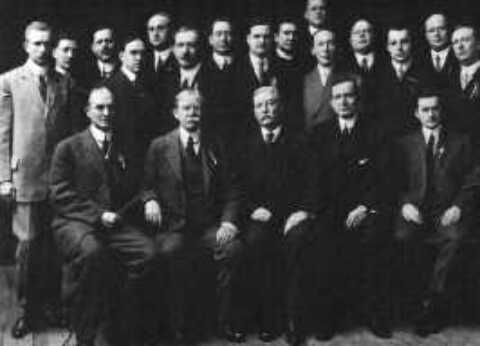
The Patterson-Watson team virtually destroyed the competition and the United States Government rewarded them, and twenty eight other company officers, with a one year sentence in the Miami County Jail and a $5,000 fine for Sherman Anti-Trust and restraint of trade violations.
Some say they were saved by a tornado and a flood. During the great Dayton flood of 1913 Patterson stopped production and directed the company's total energy to saving Dayton.
He gave food and shelter, supplied electric power and fresh water, and his doctors and nurses tended to the sick. The cabinet making shop produced boats at the rate of one every five minutes. He was even granted Marshall Law governing powers by Governor Cox.
T.J. Watson organized trainloads of relief supplies from New York corresponding with the Chief via telegraph to the home office which was the only means of communication with the Miami Valley.
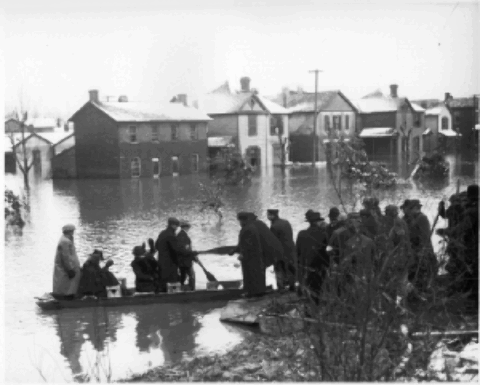
Patterson became somewhat of a national hero and hundreds of people petitioned President Wilson to pardon him and his officers, however the decision was reversed by the Court of Appeals in Cincinnati in 1915, ruling that NCR defence material in the first trial should have been admitted.
Watson would be elevated to the #2 position only to be later fired by Patterson. He then went to work for C.T.R. (Computer-Tabulating-Recording Company) which would change its name to International Business Machines (IBM) in 1924 and Watson would become president. He left the home Patterson built for him and his Pierce-Arrow motorcar, but he took his "THINK!" sign and all his training with him.
When World War I broke out in 1914 John H. Patterson was on the last train to leave Berlin. After the cessation of hostilities he was one of the first American businessmen to re-enter Berlin in 1919. In between these visits, Patterson devoted all the resources of NCR to the war effort after the United States entered the conflict in 1917. The company built precision shell timers and airplane instruments on a "fixed-fee" basis. Patterson refused to work on a "cost-plus" basis and was "proud not to have made any money on the country's necessity".
When the war ended, Patterson threw his support behind Woodrow Wilson's ill-fated attempt to persuade the United States to join the League of Nations and he even attended League sessions in Geneva.
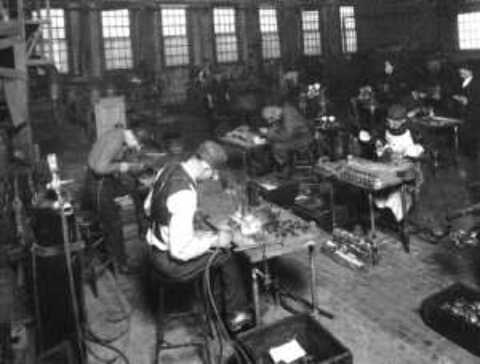
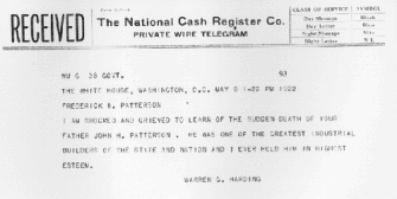
May 14, 1922 - Watson was gone and the Old Man was dead. Running "The Cash" was left to son, Frederick Beck Patterson who would take the company public in 1925
When he died, 192-point headlines announced the event. Unlike his contemporaries, "He left no great fortune," because of the expenditures of the company on social programs and its recent contributions to the World War I effort. Also he believed, "Shrouds have no pockets".
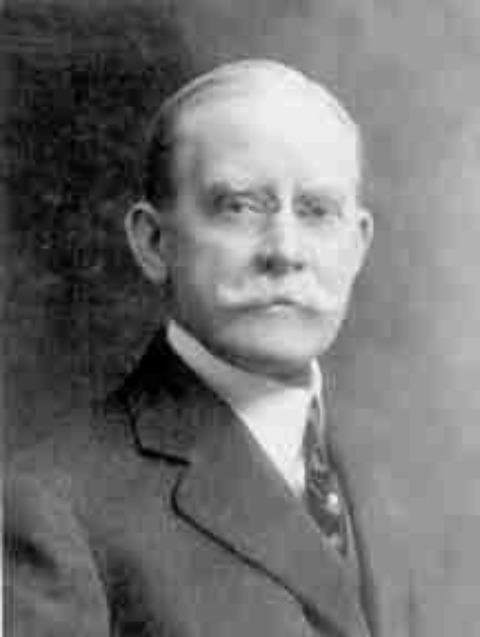
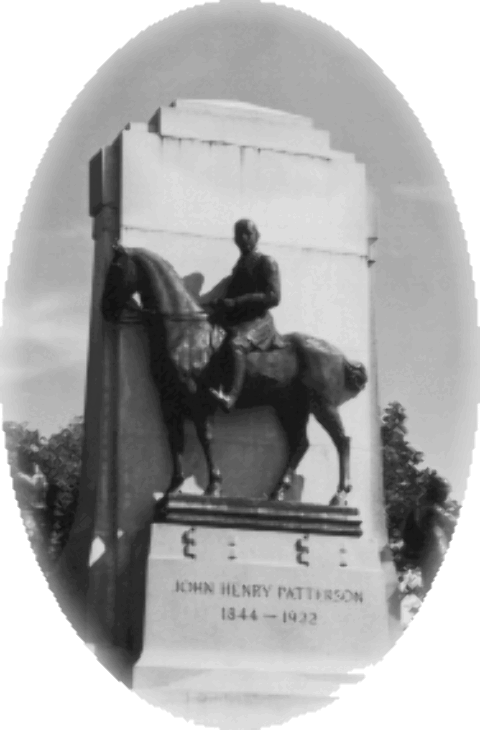
Although Patterson the man may be a dim figure to new generations of NCR employees and Dayton citizens, the ideas he introduced are an everyday part of their working world. This is also true nearly everywhere people work, products are manufactured, and they are marketed and sold.
